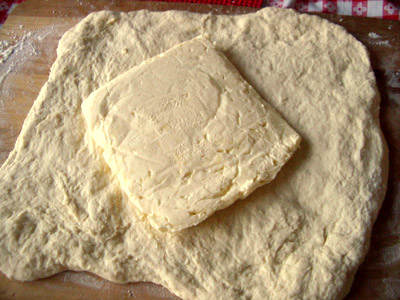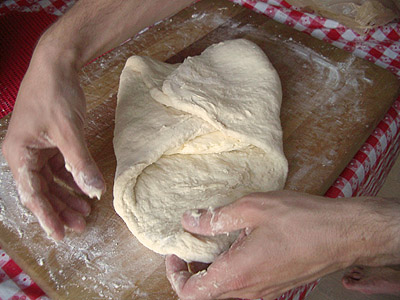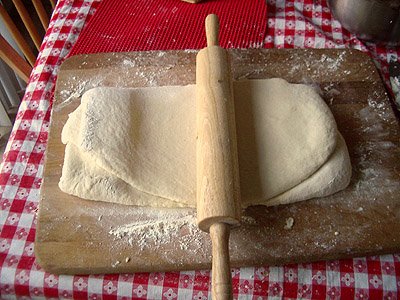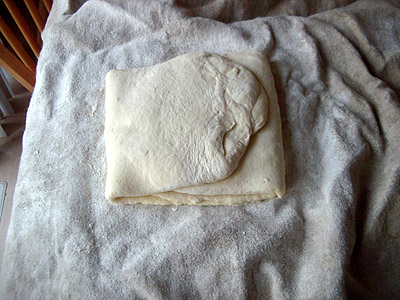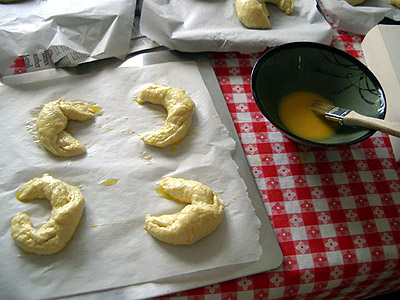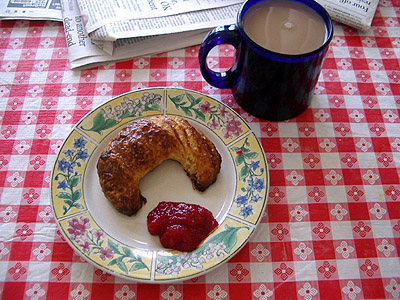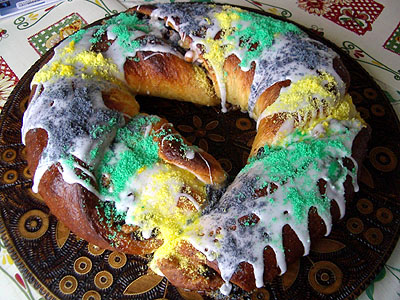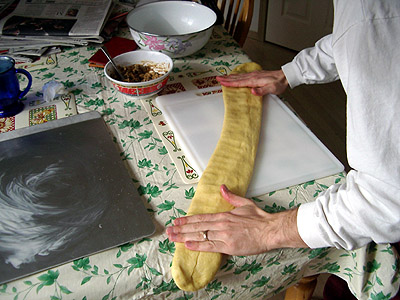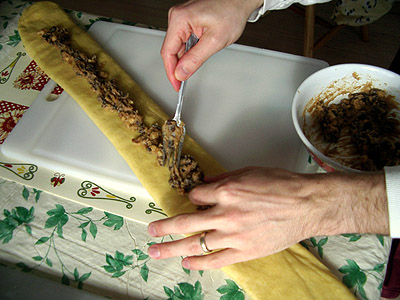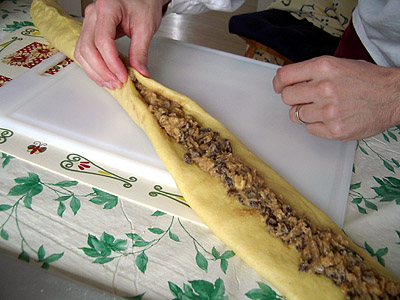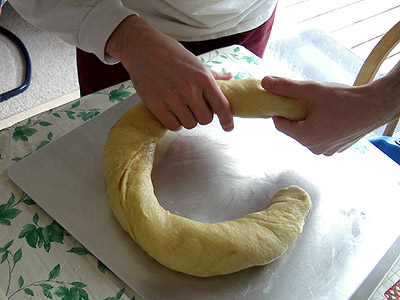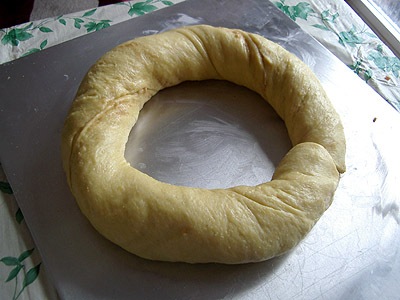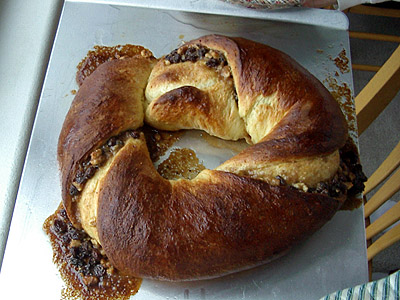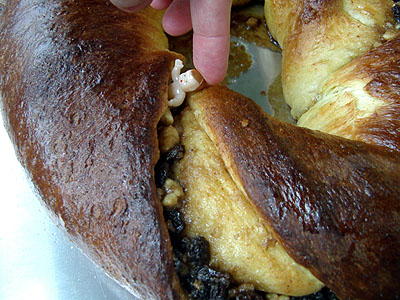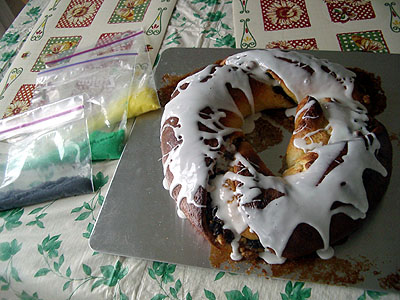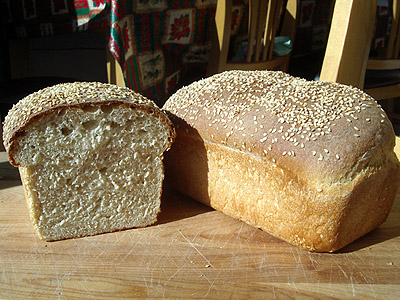
Recently I've wondered, short of getting up at 2 AM to begin making the dough, what is the best way of having a fresh, hot loaf of bread ready first thing in the morning?
I've experimented with delayed fermentation techniques a couple of times in the past week, and been pretty successful with it. Read more for info on the techniques I've tried as well as the recipe for this wonderful buttermilk bread.
Time & Temperature Redux
As I talked about in Lesson Three, two of the most important variables the baker has control over are time and temperature. Longer, slower rises using less yeast result in a more flavorful loaf of bread. Refrigeration is the most common way to retard the rise. Most bakers agree that rustic bread doughs with few ingredients beyond flour, yeast, salt, and water benefit the most from being allowed to rise in the refrigerator overnight, though other breads may benefit as well.
Aside from the benefits to flavor, bakers also use refrigeration to control the baking schedule. My recollection is that in the commercial bakery I used to work in large batches of dough were made in the morning and allowed to rise through the day. In the afternoon the dough was shaped into loaves and panned. After being allowed to rise for an hour or so in the pans, the loaves were placed in a large walk-in refrigerator for the evening. The bakers arrived in the bakery around 2 AM, pulled the pans of bread out of the refrigerator, and put them into the hot oven with little delay.
My thought is that this technique works well enough for professional bakers, so why not try it at home?
My First Try
The first evening I tried this, I made up a simple buttermilk bread recipe (and didn't keep very good notes, so if you try this one at home the proportions may need to be adjusted a bit. I'd recommend the second recipe in this article over this one anyway):
3 cups flour (I did 2 cups all-purpose unbleached and 1 cup whole wheat)
1 cup warm buttermilk
2 teaspoons instant (AKA rapid rise or bread machine) yeast
1 teaspoon salt
2 tablespoons honey
I mixed everything together, adjusting the flour and water until the dough was tacky but not sticky. I then poured the dough out onto a floured cutting board and kneaded it for approximately 10 minutes. I put the dough back into a greased bowl, covered the bowl with plastic wrap, and then let it rise until it had doubled in size, approximately 90 minutes.
At that time I shaped the loaf and placed it into greased pan. I like sesame seeds, so I misted the top of the loaf with a little water and sprinkled sesame seeds on top. I enclosed the bread pan in a plastic shopping bag and put it into the refrigerator overnight.
As you can see below, the dough continues to rise in the refrigerator overnight:
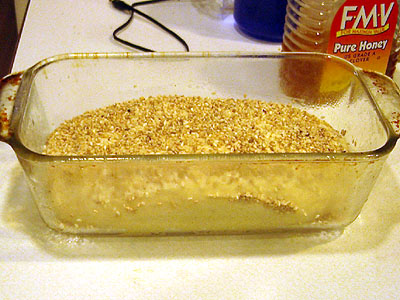
In the evening, before putting into the refrigerator

First thing in the morning, right before going into the oven
As soon as I got up, I pulled the dough out of the refrigerator and preheated the oven to 350 degrees. When the oven was hot, about 10 minutes later, I placed the bread in the oven and baked it until an instant read thermometer inserted into the center read 185 degrees. This took about 55 minutes.
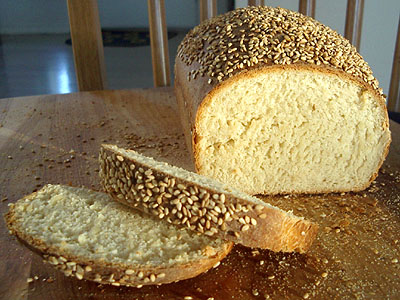
"A Learning Experience"
For a first try, this wasn't bad, but it wasn't as good as I had hoped. The bread ended up fairly heavy. Not as bad as some bricks I've baked in the past, but not quite as light as I was shooting for.
I learned something though. I noticed that, because the loaf was so cold inside, it really didn't rise in the oven until about 15 minutes into the bake; It simply took that long to take the chill off the loaf so the yeast could reactivate. Unfortunately, by that time the crust on the outside of the loaf was starting to form, so I really didn't get the rise I was hoping for. My thought was that next time I would set the dough out for a while and allow it to warm up to room temperature before putting it into the oven.
I also learned that a cold loaf takes about 10 minutes longer to bake than a loaf that goes into the oven at room temperature. Not surprising, but good to know.
I also learned that, for a honey buttermilk bread, one third of the total flour being whole wheat flour was too much for my taste. I decided to scale back on the next try.
Take Two
This time I used the honey buttermilk bread recipe from Beth Hensperger's Bread Bible. Despite my dislike of the typography and a few of the other aspects of this book, there are some solid recipes in it. This one is top knotch.
The recipe as printed in the book but not quite as I baked it, as I discuss below:
3/4 cup warm (105-115 degree) water
1 tablespoon (1 package) active dry yeast
1 teaspoon sugar
1 1/2 cups warm buttermilk
2 tablespoons melted butter
3 tablespoons honey
1 tablespoon salt
6 cups flour (I used 1 cup bread flour, 1 cup whole wheat flour, and 4 cups unbleached all-purpose flour)
Beth says to mix the active dry yeast with the water and sugar and let it sit for 10 minutes until it becomes foamy. I didn't have active dry yeast around, so I used bread machine (instant) yeast, which doesn't need 10 minutes to activate. I simply mixed the water, the yeast, and the sugar together and then proceeded to add the buttermilk, melted butter, and honey. When they were thoroughly mixed I added the salt and 3 cups of the flour.
I continued adding flour, a half a cup at a time, and mixing it together until the dough reached a kneadable consistency. At this point I poured the dough onto a floured cutting board and kneaded it for about 10 minutes, sprinkling on a little bit more flour each time the dough started to stick to my hands or the cutting board.
I put the dough back into an oiled bowl, covered it with plastic wrap, and set it aside to rise. I let it rise long enough to watch a movie (The Wild Ones, starring Marlon Brando, if you must know). The run time was 79 minutes, which was about long enough to allow the dough to double in size.
I split the dough into two pieces. One piece I shaped, panned, and covered with a plastic bag, just like the previous loaf. The second piece I punched down but did not shape: I just put it into a greased bowl and covered the bowl with plastic. I intended to shape and pan this one in the morning to see how well it would rise the next day. I put both pans into the refrigerator until the following morning.
The next morning I was surprised by what I found: the dough had risen much more than last time. The shaped loaf was pouring over the top of the pan, the unshaped loaf was over double its original size.
Due to this unexpected development I made some adjustments to my plan. I had thought I would wait an hour or so, until I saw evidence that it was really starting to rise, to put my shaped loaf into the oven, but I decided to put in the oven after only being out of the fridge for 30 minutes since it was already large enough. I baked it at 350 until an instant read thermometer inserted into the center read 185 degrees, about 55 minutes again.
The unshaped dough I punched down, shaped, and placed into a greased pan. I sprinkled on more water and sesame seeds instead of the egg wash that Hensperger recommends on this bread, covered it with plastic it, and set it aside to rise.
Because it was cold, this loaf took close to two hours to rise to the top of the pan. Baking it took about 50 minutes, since it wasn't as cold as the previous loaves.
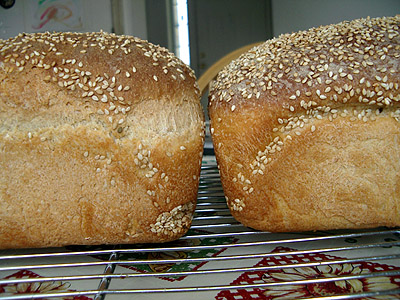
The loaf on the left is the one that I punched down and allowed to rise again for two hours in the morning, Notice how it has stretch marks right under the crown. The yeast was active so it definitely got a pop when I put it in the oven.
The loaf on the right is the one that I only set out for half an hour. It didn't get any oven spring, but it was sufficiently risen that it still ended up being adequately risen.
While I was baking them I remembered that instant yeast is more potent than active dry yeast. When modifying a recipe and replacing active dry yeast with instant yeast, you can cut the amount of yeast by around 25 percent. I didn't, which probably accounts for why my loaves rose so much overnight. But it is hard to say that that is the only reason this batch rose so much more than the previous batch. I may have done a better job kneading the dough or had the buttermilk a little bit warmer when I was getting started. It's also possible I placed the loaves in a warmer spot in the refrigerator. Having replaced some of the whole wheat flour with higher protein bread flour may have also been a factor.
Changing from one third to one sixth whole wheat flour definitely improved the flavor of these breads. At least it got me closer to what I was shooting for: a light, slighty sweet buttermilk bread with enough whole wheat flour to make it taste hearty, not heavy.
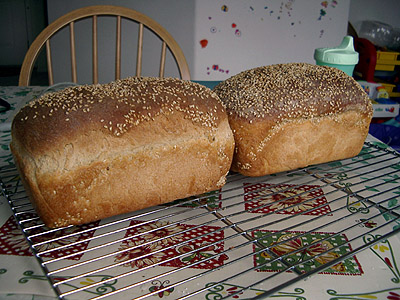
I never quite succeeded in having a loaf of ready by 8 AM, but I did manage to have a couple of loaves baked in time for brunch. Using the refrigerator to delay fermentation is definitely something I am going to continue to experiment with and would encourage other home bakers to tinker with as well.
Have any tips on using temperature to delay fermentation? Do share by posting a comment below.

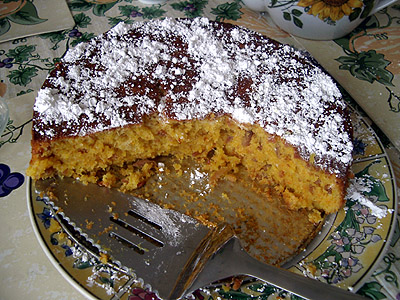


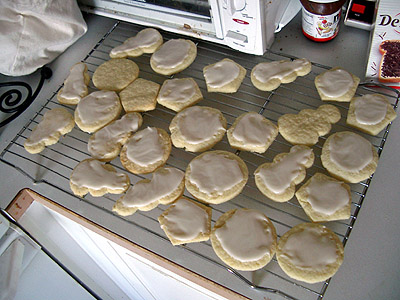
 So, how'd you spend your Bastille Day? You did celebrate Bastille Day, didn't you?
So, how'd you spend your Bastille Day? You did celebrate Bastille Day, didn't you?